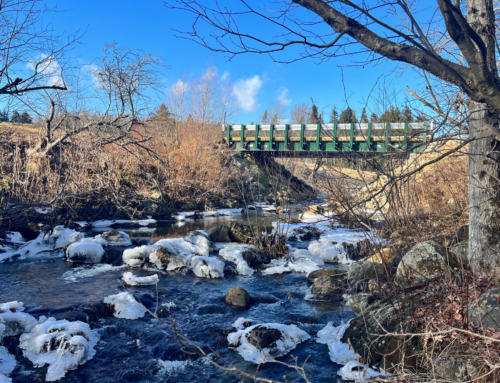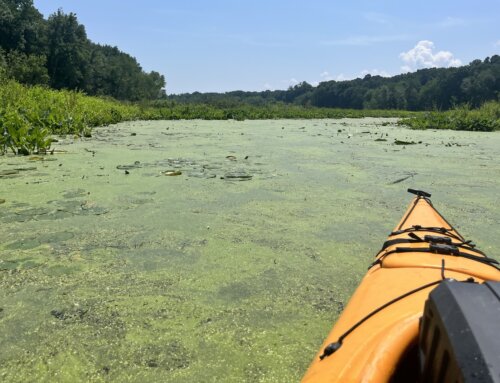Our River Is Under Siege
MAY 2008 — This has not been a good two years for the Connecticut River or for that matter all VT and NH rivers and lakes. Last year we discovered the invasive algae Didymosphenia geminata, better known as didymo or rock snot in the Connecticut River. Didymo has the potential to spread, destroy river bottom habitat and make our watershed rather unappetizing to fish or swim in if it forms its usual thick mats on the bottom of our river.
Now we are faced with a potential invasion of Viral Hemorrhagic Septicemia, called VHS discovered just some 75 miles to the west of our watershed. VHS is an infectious virus that has the potential to kill fish by the thousands. Fish were diagnosed with VHS for the first time in 2005 in the Great Lakes and it caused fish kills in lakes Huron, St. Clair, Erie, and Ontario and the St. Lawrence River. It has previously been known as a marine virus. No one knows for sure how it mutated into a freshwater virus but we do know that it is moving east toward the Connecticut River.
The VHS virus and didymo algae are considered invasive species but scientists are not sure how either arrived on our doorstep. They may have hitch-hiked in ballast water from ships, the felt bottom of flyfishing waders or especially for VHS brought in via frozen herring used as bait. However VHS originally got here once infected, fish carried the virus into Lake Superior and ballast discharged from ships moved the virus to port cities there.
VHS spreads through moving live fish or water from one waterbody to another. The disease now has been found in three inland lakes, one each in New York, Michigan and Wisconsin. It will be no easy task to stop the spread of VHS. We need to focus efforts on those pathways that present the greatest risk. A little water left in a bilge, on fishing equipment or carried by a bird all represent a low risk of transmission but moving infected fish or large amounts of water that contain VHS to new locations are threats to our river.
Once a waterbody has been infected with VHS it spreads quickly not only as it did throughout the individual Great Lakes but into smaller inland waters as well. In the Great Lakes experience the existence of the virus was not detected until fish began to die in large numbers. Evidence suggests that the virus can be present in a waterbody for up to two years before causing noticeable fish kills.
VHS infected fish shed the virus into the water through their urine and reproductive fluids. The virus is absorbed into the gills of healthy fish. Healthy fish can also be infected when they eat an infected fish. Infected fish and water can easily spread the virus if they are released into a new water body. That is why the regional and state rules of no transport by anglers, boaters and other water users of uninspected fish between waterbodies are going into effect now. The cliché is “An ounce of prevention is worth a pound of cure.”
Is there any hope for fish survival? Fish that survive an infection will develop antibodies to the virus. The antibodies will protect the fish against new VHS infections for some time. However the concentration of antibodies in fish will drop over time and the fish may start shedding the virus again. If this is the case then we can expect to see a cycle of fish kills on a recurring basis.
It is crucial that all anglers and water users help stop the spread of the invasive algae didymo and the virus VHS by:
· Following all Fish & Wildlife regulations pertaining to baitfish use, fish importation and fish movement
· Inspecting your boat, trailer, and all equipment and remove any visible aquatic plants, animals, and mud
· Draining all water from your boat, motor, bilge, live wells, and bait containers before leaving any waterbody
· Not moving live fish, including baitfish, from one waterbody to another. Baitfish be killed and discarded prior to leaving the waterbody
· Buying your baitfish from licensed and inspected bait dealers
· Washing your boat and equipment with high pressure or hot water, or let it dry for five days between waterbodies.
The thirteen states in the Northeast, including VT and NH just created a new set of fish health importation guidelines that lays out what testing should be done before fish are moved across state borders. These guidelines were approved at the Northeast F&W Directors meeting at the beginning of May 2008. Both Vermont and New Hampshire have warning programs and posters in place to attempt to halt the spread of didymo. The same suggestions apply to VHS. Please heed the warnings!
David L. Deen, River Steward for the Connecticut River Watershed Council, an organization that has been an articulate voice for the Connecticut River for more than half a century.







